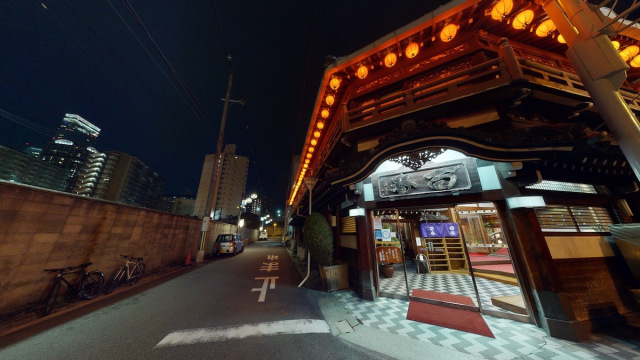
Historic building used to be a brothel, now its ornate interiors are in danger of fading away.
From the early 1600s to the early 1900s, legal red-light districts known as yukaku flourished in Japan. Prostitutes and brothels operated legally within these areas, with many establishments displaying their workers to the public through wooden slats.
▼ An example of an ‘exhibit’ in Tokyo’s Yoshiwara district, one of the country’s largest yukaku, around the turn of the 20th Century.
Image: Wikipedia
During the U.S. occupation following World War II, the U.S. General Headquarters issued an order to abolish legalised prostitution in Japan, and in 1946, brothels in yukaku areas were forced to rebrand themselves as “cafes” or “ryotei” (“high-class Japanese-style restaurants”) instead.
Although prostitution covertly continued, once the Anti-Prostitution Law was enforced in 1958, yukaku ceased to exist as they once were, leading many of the ornate buildings to fall into disrepair. However, in Osaka, where Tobita Shinchi or Tobita Yukaku, the largest yukaku in western Japan was once located, at least one former brothel remains, now operating as a restaurant.
▼ Taiyoshi Hyakuban was originally built as a 21-room brothel in 1918.
Taiyoshi Hyakuban was converted to a restaurant in 1970 and designated as a national registered tangible cultural property in 2000. The building still retains original features of the brothel, including themed rooms and paintings, but is in dire need of repairs, which has led a group of locals to form the Micro Heritage project and start a crowdfunding campaign to help the owner preserve this part of Japanese history.
Now that the building is over 100 years old, the foundations, exteriors, and interiors have all deteriorated significantly, and while the second-generation owner had hoped to restore it, the drop in customers due to the coronavirus pandemic has left them in a bind, as they are now unable cover the costs of restoration.
▼ Restoring precious artwork is just one of the repairs needed.
With few buildings like this left in Japan, locals are keen to preserve its architectural and cultural history, which stems from the Taisho Period (1912-1926), a time when Japanese culture was beginning to blend with trends from overseas.
There are so many wonderful design flourishes to be found throughout the two-storey wooden building, which contains larger rooms on the ground floor and 13 smaller tea-room style rooms on the second floor, with each one decorated differently.
Repair work can be costly, which is one of the reasons why so many of these old buildings in former yukaku districts were sold and demolished.
The Micro Heritage project aims to protect privately owned national registered tangible cultural properties in the Osaka area, and before setting up the crowdfunding campaign, they attempted to draw interest in the restaurant with a special VR video that allows you to walk through every room inside the building.
The VR video reveals the awesome beauty of the building, and the sad state of it, peeling murals and warped beams and all.
While there’s a tendency to romanticise yukaku, project coordinators want to remind everybody that there’s a dark side to this era of history and the treatment of women during this period. Preserving the history of the building isn’t about romanticising its dark history but allowing people to educate themselves and learn more about the city’s urban culture in a tangible way.
The crowdfunding campaign aims to raise 15 million yen (US$136,786) by 10 August, and has currently raised 3.3 million yen, or 22 percent of the target goal, with 33 days left on the project. Reward tiers start at 3,000 yen and go all the way up to 1 million yen for meal tickets, tours and photo books.
The campaign is being run on an all-or-nothing basis, which means funds will be returned and repairs will stall if the target goal isn’t achieved, so if you’re a fan of Japanese architecture, you’ll want to act now and cross your fingers and toes in the hope that the project is successful.
Because after losing the Nakagin Capsule Tower, a Kyoto bath house, the oldest ryokan at an onsen resort, and a restaurant founded in the Edo period, it would be heartbreaking to have to say goodbye to any more historic Japanese establishments.
Restaurant information
Taiyoshi Hyakuban / 鯛よし百番
Address: Osaka-fu, Osaka-shi, Nishinari-ku Sanno 3-5-25
大阪府大阪市西成区山王3-5-25
Hours: 5:00 p.m.-11:00 p.m. (Closed Mondays)
Website
Related: Readyfor/Micro Heritage, Taiyoshi Hyakuban (Tobita Hyakuban), Taiyoshi Hyakuban VR Project
Images: Readyfor/Micro Heritage unless otherwise stated
● Want to hear about SoraNews24’s latest articles as soon as they’re published? Follow us on Facebook and Twitter!
[ Read in Japanese ]

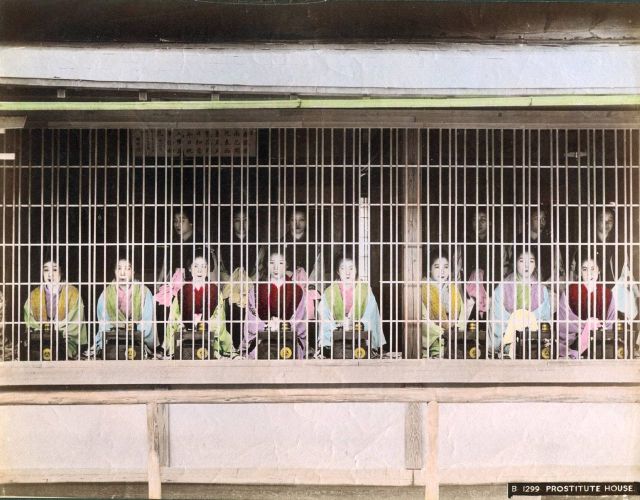
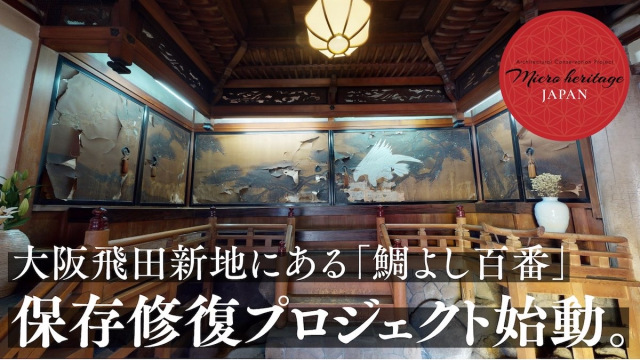
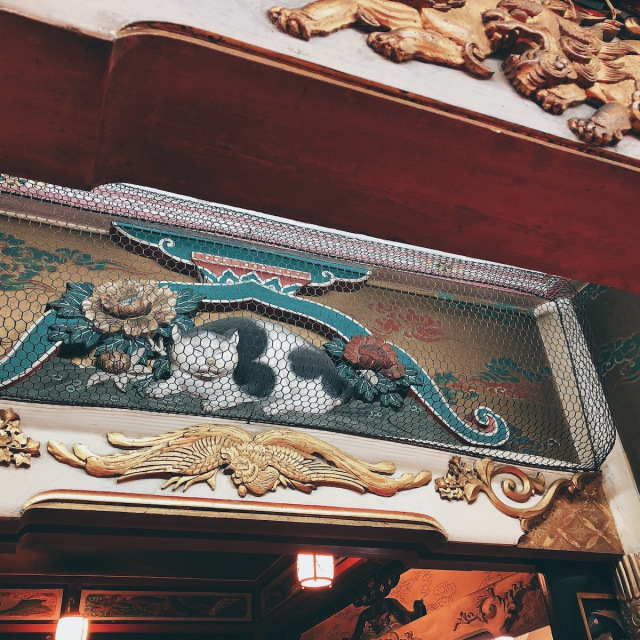
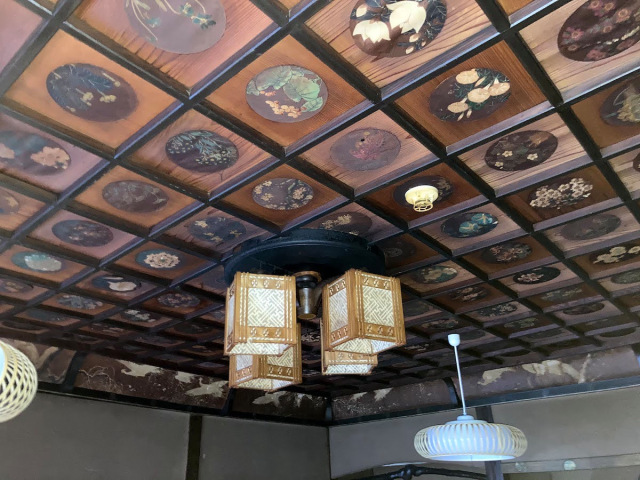
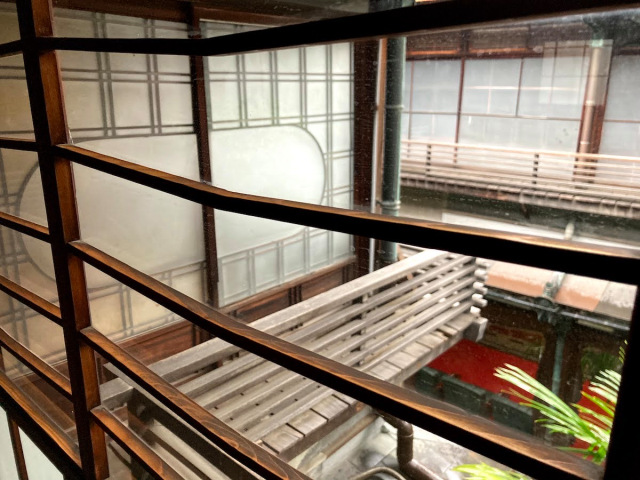
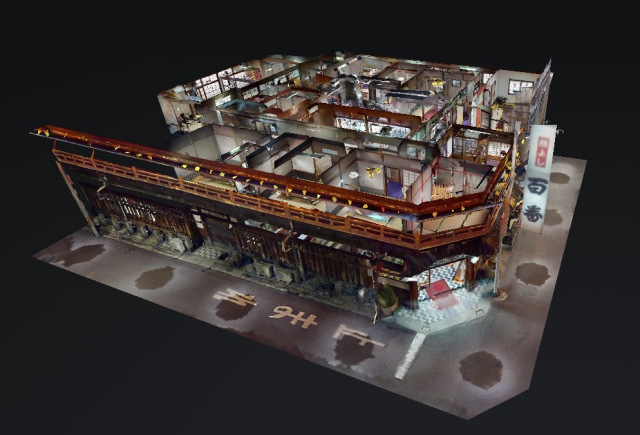

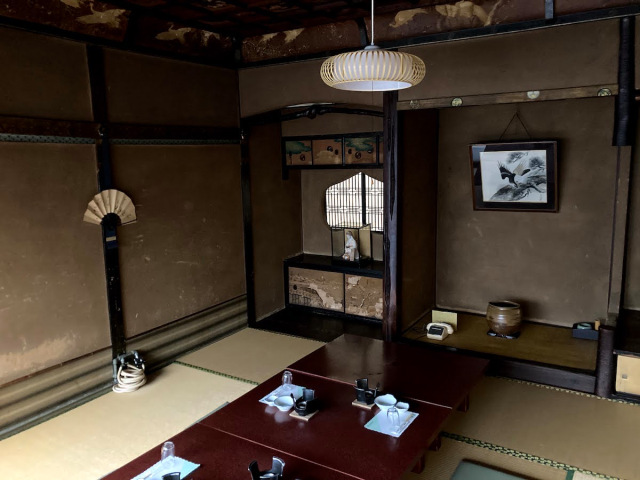
 World Heritage Site in Gunma struggling to crowdfund repair costs
World Heritage Site in Gunma struggling to crowdfund repair costs Kimono Project is creating a different kimono to represent every country on Earth【Photos】
Kimono Project is creating a different kimono to represent every country on Earth【Photos】 Someone crashed a car into Japan’s oldest restroom
Someone crashed a car into Japan’s oldest restroom Harajuku Station will be demolished after the Tokyo Olympics and Paralympics
Harajuku Station will be demolished after the Tokyo Olympics and Paralympics Japanese net users react to the results of the 2018 Global Liveability Index
Japanese net users react to the results of the 2018 Global Liveability Index McDonald’s new Happy Meals offer up cute and practical Sanrio lifestyle goods
McDonald’s new Happy Meals offer up cute and practical Sanrio lifestyle goods McDonald’s Japan releases a pancake pie for new retro kissaten coffeeshop series
McDonald’s Japan releases a pancake pie for new retro kissaten coffeeshop series Studio Ghibli glasses cases let anime characters keep an eye on your spectacles
Studio Ghibli glasses cases let anime characters keep an eye on your spectacles All-you-can-drink Starbucks and amazing views part of Tokyo’s new 170 meter-high sky lounge
All-you-can-drink Starbucks and amazing views part of Tokyo’s new 170 meter-high sky lounge The oldest tunnel in Japan is believed to be haunted, and strange things happen when we go there
The oldest tunnel in Japan is believed to be haunted, and strange things happen when we go there McDonald’s Japan goes old-school with new Showa-era Kissa Mac sweets lineup【Photos】
McDonald’s Japan goes old-school with new Showa-era Kissa Mac sweets lineup【Photos】 Studio Ghibli releases new action figures featuring Nausicaä of the Valley of the Wind characters
Studio Ghibli releases new action figures featuring Nausicaä of the Valley of the Wind characters Is the new Shinkansen Train Desk ticket worth it?
Is the new Shinkansen Train Desk ticket worth it? Kyoto’s 100 Demons yokai monster parade returns!
Kyoto’s 100 Demons yokai monster parade returns! Beautiful Sailor Moon manhole cover coasters being given out for free by Tokyo tourist center
Beautiful Sailor Moon manhole cover coasters being given out for free by Tokyo tourist center Disney princesses get official manga makeovers for Manga Princess Cafe opening in Tokyo
Disney princesses get official manga makeovers for Manga Princess Cafe opening in Tokyo More foreign tourists than ever before in history visited Japan last month
More foreign tourists than ever before in history visited Japan last month Starbucks reopens at Shibuya Scramble Crossing with new look and design concept
Starbucks reopens at Shibuya Scramble Crossing with new look and design concept Beautiful new Final Fantasy T-shirt collection on the way from Uniqlo【Photos】
Beautiful new Final Fantasy T-shirt collection on the way from Uniqlo【Photos】 Foreign English teachers in Japan pick their favorite Japanese-language phrases【Survey】
Foreign English teachers in Japan pick their favorite Japanese-language phrases【Survey】 Japanese convenience store packs a whole bento into an onigiri rice ball
Japanese convenience store packs a whole bento into an onigiri rice ball We try out “Chan Ramen”, an underground type of ramen popular in the ramen community
We try out “Chan Ramen”, an underground type of ramen popular in the ramen community Studio Ghibli releases Kiki’s Delivery Service chocolate cake pouches in Japan
Studio Ghibli releases Kiki’s Delivery Service chocolate cake pouches in Japan Japan’s bone-breaking and record-breaking roller coaster is permanently shutting down
Japan’s bone-breaking and record-breaking roller coaster is permanently shutting down New definition of “Japanese whiskey” goes into effect to prevent fakes from fooling overseas buyers
New definition of “Japanese whiskey” goes into effect to prevent fakes from fooling overseas buyers Our Japanese reporter visits Costco in the U.S., finds super American and very Japanese things
Our Japanese reporter visits Costco in the U.S., finds super American and very Japanese things Studio Ghibli unveils Mother’s Day gift set that captures the love in My Neighbour Totoro
Studio Ghibli unveils Mother’s Day gift set that captures the love in My Neighbour Totoro Foreign passenger shoves conductor on one of the last full runs for Japan’s Thunderbird train
Foreign passenger shoves conductor on one of the last full runs for Japan’s Thunderbird train Domino’s Japan now sells…pizza ears?
Domino’s Japan now sells…pizza ears? New Japanese KitKat flavour stars Sanrio characters, including Hello Kitty
New Japanese KitKat flavour stars Sanrio characters, including Hello Kitty Kyoto creates new for-tourist buses to address overtourism with higher prices, faster rides
Kyoto creates new for-tourist buses to address overtourism with higher prices, faster rides Sales of Japan’s most convenient train ticket/shopping payment cards suspended indefinitely
Sales of Japan’s most convenient train ticket/shopping payment cards suspended indefinitely Sold-out Studio Ghibli desktop humidifiers are back so Totoro can help you through the dry season
Sold-out Studio Ghibli desktop humidifiers are back so Totoro can help you through the dry season Japanese government to make first change to romanization spelling rules since the 1950s
Japanese government to make first change to romanization spelling rules since the 1950s Ghibli founders Toshio Suzuki and Hayao Miyazaki contribute to Japanese whisky Totoro label design
Ghibli founders Toshio Suzuki and Hayao Miyazaki contribute to Japanese whisky Totoro label design Doraemon found buried at sea as scene from 1993 anime becomes real life【Photos】
Doraemon found buried at sea as scene from 1993 anime becomes real life【Photos】 Tokyo’s most famous Starbucks is closed
Tokyo’s most famous Starbucks is closed One Piece characters’ nationalities revealed, but fans have mixed opinions
One Piece characters’ nationalities revealed, but fans have mixed opinions We asked a Uniqlo employee what four things we should buy and their suggestions didn’t disappoint
We asked a Uniqlo employee what four things we should buy and their suggestions didn’t disappoint Princesses, fruits, and blacksmiths: Study reveals the 30 most unusual family names in Japan
Princesses, fruits, and blacksmiths: Study reveals the 30 most unusual family names in Japan Street Kart company famous for Super Mario karts ends crowdfunding campaign with dismal support
Street Kart company famous for Super Mario karts ends crowdfunding campaign with dismal support Japanese middle schoolers build an awesome real/VR roller coaster for their class project【Video】
Japanese middle schoolers build an awesome real/VR roller coaster for their class project【Video】 Stay at the Nara Juvenile Prison hotel in Japan in 2020
Stay at the Nara Juvenile Prison hotel in Japan in 2020 200,000 yen-per-night Airbnb is the successor to Tokyo’s famous Nakagin capsule apartments【Pics】
200,000 yen-per-night Airbnb is the successor to Tokyo’s famous Nakagin capsule apartments【Pics】 Japanese temple and shrine craftsmen now building world’s coolest doghouses, the Inudono【Pics】
Japanese temple and shrine craftsmen now building world’s coolest doghouses, the Inudono【Pics】 Japan’s first-ever micro pig cafe opens in Tokyo 【Pics & Video】
Japan’s first-ever micro pig cafe opens in Tokyo 【Pics & Video】 The depressing diet of a Tokyo prostitute during Japan’s Edo period
The depressing diet of a Tokyo prostitute during Japan’s Edo period Gorgeous traditional Japanese chest of drawers is also a rolling suitcase 【Video】
Gorgeous traditional Japanese chest of drawers is also a rolling suitcase 【Video】 Japan develops special sushi for pregnant women
Japan develops special sushi for pregnant women Exhibition on the 1,500 year-history of traditional Japanese women’s clothing to open in Shibuya
Exhibition on the 1,500 year-history of traditional Japanese women’s clothing to open in Shibuya No one will be flying Evangelion spear to the moon as crowdfunding project dies on the vine
No one will be flying Evangelion spear to the moon as crowdfunding project dies on the vine Japanese water purification ritual at shrines under threat due to the pandemic
Japanese water purification ritual at shrines under threat due to the pandemic Nintendo buys five-billion yen plot of land, will build new development headquarters in Kyoto
Nintendo buys five-billion yen plot of land, will build new development headquarters in Kyoto A Maasai tribesman in Ginza: How Tokyo fashion empowers women a world away in Africa 【Photos】
A Maasai tribesman in Ginza: How Tokyo fashion empowers women a world away in Africa 【Photos】 Nintendo’s historic former headquarters in Kyoto to reopen as a hotel
Nintendo’s historic former headquarters in Kyoto to reopen as a hotel
Leave a Reply